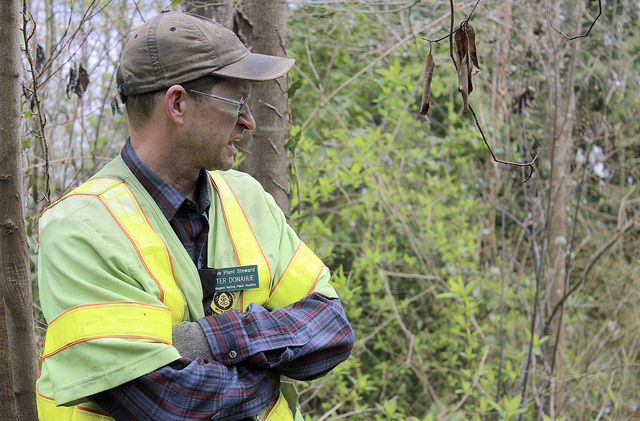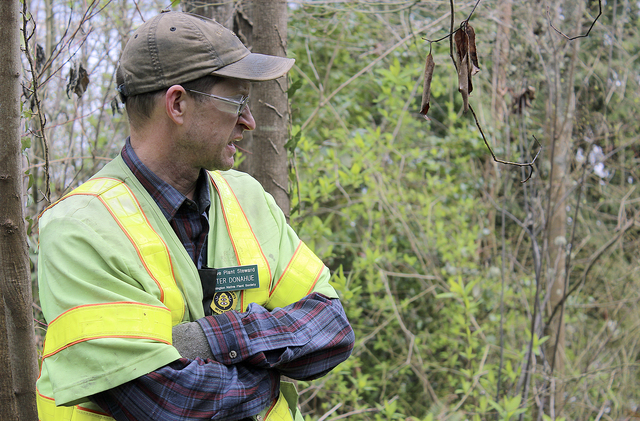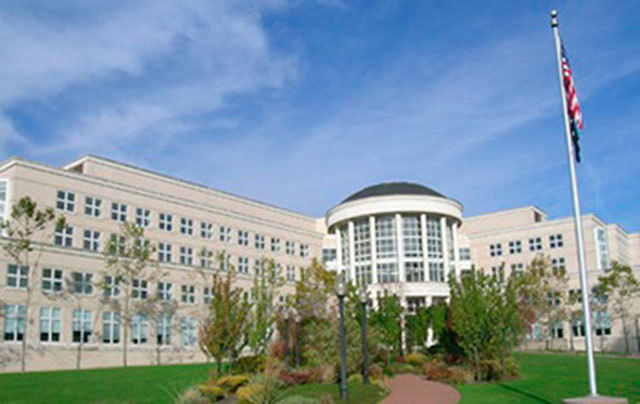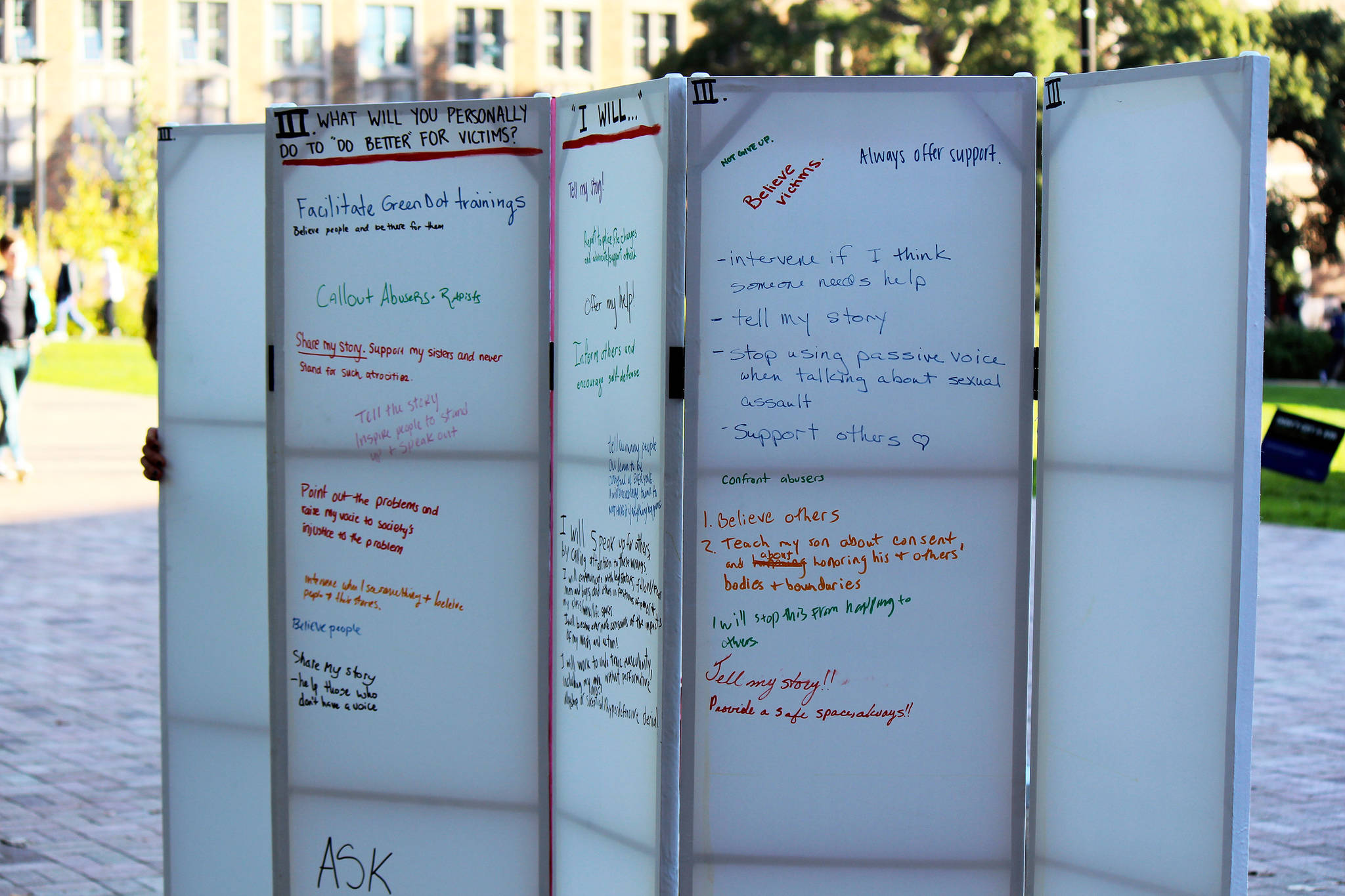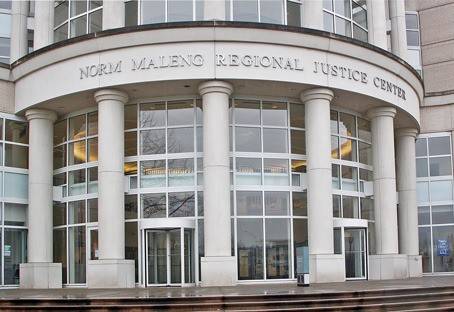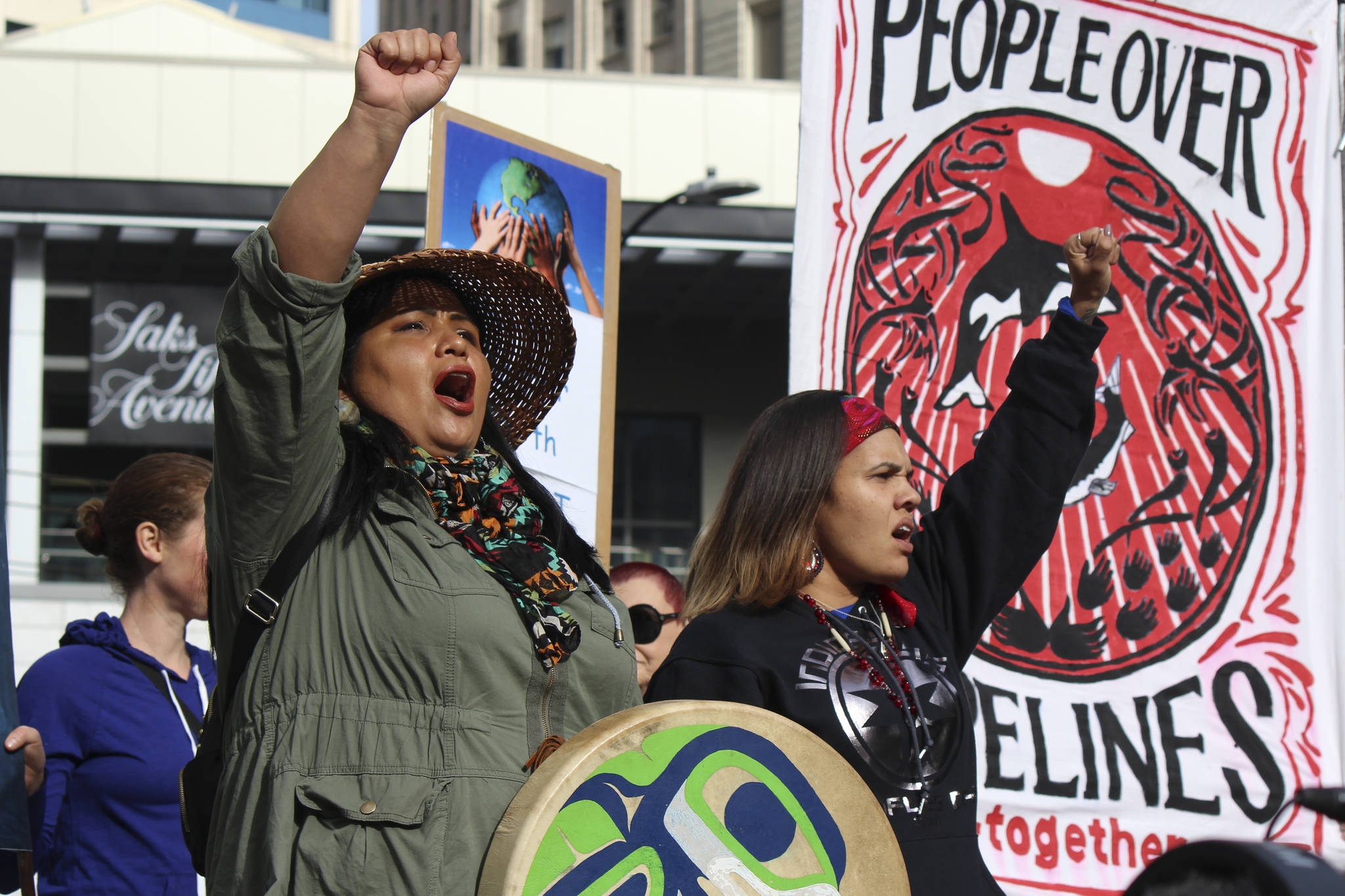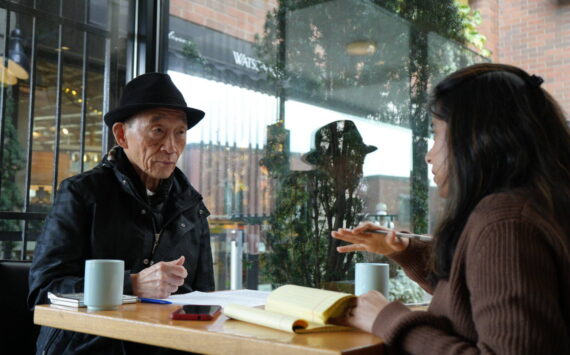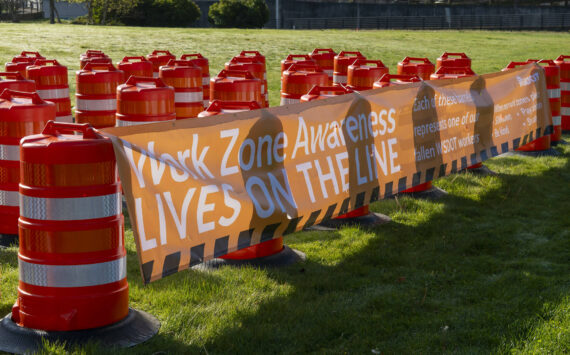On a drizzly Monday morning, Peter Donahue trudges through the slick, squelching mud of the Mount Baker Community View Site, a chunk of public land on a hill across the street from the Mount Baker Park Beach on Lake Washington.
It’s a homely stand of trees and brush, crisscrossed by slippery paths. Some trees are spindly, some more stately, but many are dead or dying; while the tangle of vegetation seems lush, Donahue says, it’s actually crowded with invasive species, including ivy, holly, blackberry, and Japanese knotweed. Because the invasive plants strangle the native ones, and the hillside is pitched at a 45-degree angle, and the clay soil is zapped of nutrients, it’s maddeningly difficult to keep new trees alive here. Of the 200 or so he’s planted over the past three years, he estimates, maybe 40 remain. “It’s been a horrible attrition rate,” he says. “And, grant you, I’m not an expert. I’m a volunteer. But I know this acre of land really well.”
Donahue is an electrician, a Judkins-area apartment dweller, and a workaday man in his 50s. He’s been a Seattle resident for 35 years. But since 2013, he’s also been a forest steward for the Green Seattle Partnership (GSP), a collaboration, launched in 2004 between the City of Seattle and about two dozen nonprofits and businesses, that aims to protect Seattle’s urban forests.
Forest stewards are unpaid, but required to commit to at least two years of service, 100 hours of volunteer time, and 20 hours of training. They must also coordinate at least four volunteer events per year, always at one specific site. Donahue has been doing all that and more, and has developed a nostalgic, sentimental attachment to the place. “This site has kind of changed me,” he says. “When I started working here in 2013, I wasn’t the same person I am now.”
So he became distraught a few weeks ago when a Seattle Parks and Recreation staffer informed him that a “handful” of the delicate conifers he’d planted on a well-prepared slice of the Mount Baker site had been flagged for removal, and that a crew of volunteers were coming in to dig them up. Even more distressing: Part of that work would be funded by the 34th Avenue South Homeowners Association. He showed up on a recent Friday to find 25 young cedar, hemlock, and Douglas fir branches tied with orange tape; two days later, he counted four that had already been pulled from the ground.
Seattle Parks and Recreation, it turns out, has had a longstanding agreement with some of the homeowners on 34th Avenue South, several blocks lined with large, well-manicured houses that border Donahue’s site. In 1996, in exchange for their stewardship of the land, Seattle Parks agreed to let the group make decisions about it—decisions that would protect their view of the lake, and, by extension, the value of their real estate. The conifers in question, when fully grown, could reach 100 feet tall.
The agreement—or at least the tree removal it now may be paving the way for—runs somewhat counter to the city’s goals for revegetating the city. Conifers are precisely the kind of trees that GSP has in mind when it comes to restoring Seattle’s greenspace, says Jon Jainga, planning and development supervisor with Seattle Parks and Recreation. They were the region’s first trees, long before 19th-century logging decimated the forests. Planting them could help “rebuild what was originally here in the Seattle area,” he says, and “keep it the Emerald City that it was.”
However, to date, these particular conifers remain marked for removal.
Clearly, Peter Donahue is attached to the trees; he characterizes the idea of relocating them to another part of the site with poorer drainage, for instance, as “[creating] a bathtub to drown my babies in.” But he’s also attached to the ecological practices he believes his role demands of him.
The Green Seattle Partnership has a mission, he says: To create healthy urban forests. “That’s why I joined. They didn’t say, ‘Hey, would you like to be a landscaper for a bunch of rich people up the hill?’ I didn’t plant these trees in spite, or as a statement. This is a site-managed plan that was approved by the City of Seattle. And they changed the plan on me. I want to know why.”
As a rule, private individuals don’t have control over Seattle’s public land, and Jainga says the agreement between the city and the Mount Baker homeowners “is a very unique situation.” Now, he says, Seattle Parks, SDOT, and a slew of other city departments are putting their heads together “to get all the facts lined up” and resolve the dispute.
“We really value the work that our volunteers are doing,” he adds. “We want to honor their work … but at the same time, we’ve got to look at the [other] agreements that are out there, that pop up from time to time.”
Jainga declined to share the names of the homeowners the city has been working with on the issue, as did Donahue, saying the homeowners asked not to be contacted by the press. One area homeowner told Seattle Weekly that it was a question for the group of neighbors who oversee the “view agreement” and promised to pass on our contact information to the proper person. Seattle Weekly has not heard back.
In some ways the Mount Baker case is unique; in others, it’s the latest battle in an ongoing war between wealthy Seattleites with good views and the grand trees that would impede them.
In 2002, a federal judge hired a landscaper to level some 120 cherry and maple trees in Colman Park—also in Mount Baker—to create a better lake view. He was caught and fined $500,000 plus interest, a total of $618,000 that he paid in full by spring 2006. All the fines went toward restoration work in the park.
In 2012, former Mariners baseball star John Olerud sued his neighbors because their Chinese pine and Colorado spruce blocked his view of Lake Washington and the Seattle skyline—and won.
And then, of course, there was the removal of mature maples in West Seattle, which came to light just last week.
But in Mount Baker, these homeowners may be completely within their rights to remove the trees, thanks to a decades-old agreement that current Seattle Parks staffers do not yet fully understand.
“We’re all trying to figure out, OK, how did this agreement come about?” says Jainga. If the homeowners’ association “has this old agreement, we’ve just got to look at it and see, is it consistent with our current policies?”
Steve Dubiel, executive director of EarthCorps—one of the city’s urban forest contractors and an active member of GSP—agrees that this is an extremely rare case, and says he supports Seattle Parks “in researching how this agreement came about and what the best path forward is for all parties.”
And sure, it’s just a few trees we’re talking about, but sometimes “we underestimate the value of a tree in a city,” Dubiel says.
He points out that the GSP’s effort to restore Seattle’s forests, now spreading to half a dozen other cities across the region, “has really planted the seed for a wide and deep citizen movement to care for the place we call home.”
Donahue began working with GSP in 2013 mostly because the economy was terrible and he had a lot of extra time on his hands. “It was a bad time, financially,” he says. “There was no work. I was just sort of odd-jobbing it.”
He was looking for something meaningful to do, so he began going to the GSP forest-steward trainings every Friday for six weeks. “At first I was like, ‘Whatever.’ I was going to take it or leave it.” But then he got inspired by the ecologists he was working with, and tilling the land brought back good memories from his childhood. Donahue comes from a long line of timber workers in Mason County, and as a kid he used to plant trees for pocket money. Today, without a yard, a garden, or a car in Seattle, the Mount Baker site has become his primary access to any kind of wilderness. “I live next door to a gas station,” he says. “This is the only place I can go. This is where I go when I want to be in the woods.”
Then, without much effort on his part, the volunteers started showing up—school groups, community groups, corporate groups. He recalls one day working with a bunch of coders from Amazon “who looked like their skin hadn’t seen the sun in a long time. And they totally loved it! They pitched in, they got scratched by blackberries and stung by yellow jackets, and they laughed the whole time. We had so much fun here, we really did,” he says, and suddenly his voice begins to tremble and crack. His eyes mist over.
Donahue quickly clears his throat and looks away.
He points out that his day job tends to be pretty thankless. “Nobody gives a good goddamn what I do all day long, you know?” But when he’s working at the site, “people come up and they shake [my] hand. They say, ‘Thanks a lot for what you’re doing.’ That really made me want to keep doing this.”
Donahue is in conversation with members of the homeowners’ association, and Jon Jainga and others at the city are working on coming to some kind of resolution. No decisions have been made yet.
But if they can’t come to terms, Donahue doesn’t believe this is a fight he can win, because he’s a mere volunteer, and money talks. “If I start a war here, I will lose,” he says. But this is public land, after all. “We all need to take care of this place together, right? Somehow, we’ve got to work it out.”
